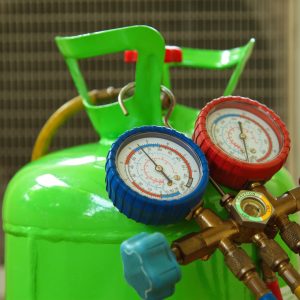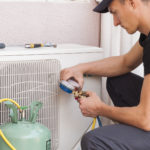In an effort to reduce greenhouse gas emissions, refrigerant standards for air conditioners are evolving yet again. But unlike the previous transition away from R-22 refrigerants, the next transition is a little murkier.
What will the new standards be? When will they be implemented? Will they require operators to receive new training? Are there safety implications?
Keep reading to get up to speed on everything we know about ongoing changes to refrigerant standards.
Why are standards changing again?
As operators already know, the industry is currently in the process of phasing out R-22 by January 1, 2020. The reason R-22 is being regulated out of use is because it’s an ozone-depleting refrigerant. This change in regulation is part of a global effort — stemming from the Montreal Protocol all the way back in 1987 — to protect the Ozone Layer by phasing out known ozone-depleting substances.
The catch? The most commonly used replacements for R-22, such as R-410A, have relatively high GWP (global warming potential) ratings. This rules out their use going forward into the next phase of potential regulation changes, which are aimed at reducing greenhouse gas emissions. These changes stem from a recent amendment to Montreal Protocol to include greenhouse gas emission reductions alongside reductions on ozone-depleting substances.
What are the new refrigerant standards?
While there are no firm standards in place yet that governs the use of specific new refrigerants in residential and commercial A/C systems, there is a classification of refrigerants the industry is moving towards: A2L refrigerants. These refrigerants are considered to have low GWP ratings. They include R-32, R-454B, R1234yf, and R1234ze(E).
The challenge with these refrigerants is they have poor flammability ratings, making them more dangerous to work with. In some cases, they also deliver lower performance than refrigerants with a higher GWP.
Given the above limitations, the most common R-22 alternative used today — R-410A — is the most difficult to replace using A2L refrigerants, though some manufacturers are recommending the use of R-454B.
When will these changes take place?
Currently, there’s no timetable for these standards in North America. This is partly due to some uncertainty with the EPA’s authority to regulate greenhouse gas emitting refrigerants (in 2014 the EPA began proactively delisting certain refrigerant applications, and was successfully challenged in court for exceeding its authority).
Many manufacturers have already begun the transition to low-GWP equipment. It’s estimated that 68 million air conditioners globally are already using A2L refrigerants.
How will HVAC installers and specialists be impacted?
A2L refrigerants have higher pressures, flammability, and toxicity than most current-state refrigerants, so there are clear safety concerns to be aware of. This means installers and technicians should be proactive and get ahead of new regulations, so they’re ready to safely handle, install, and service equipment using A2L refrigerants.
Many manufacturers are offering training resources, courses, and even free online webinars to prepare HVAC specialists.




